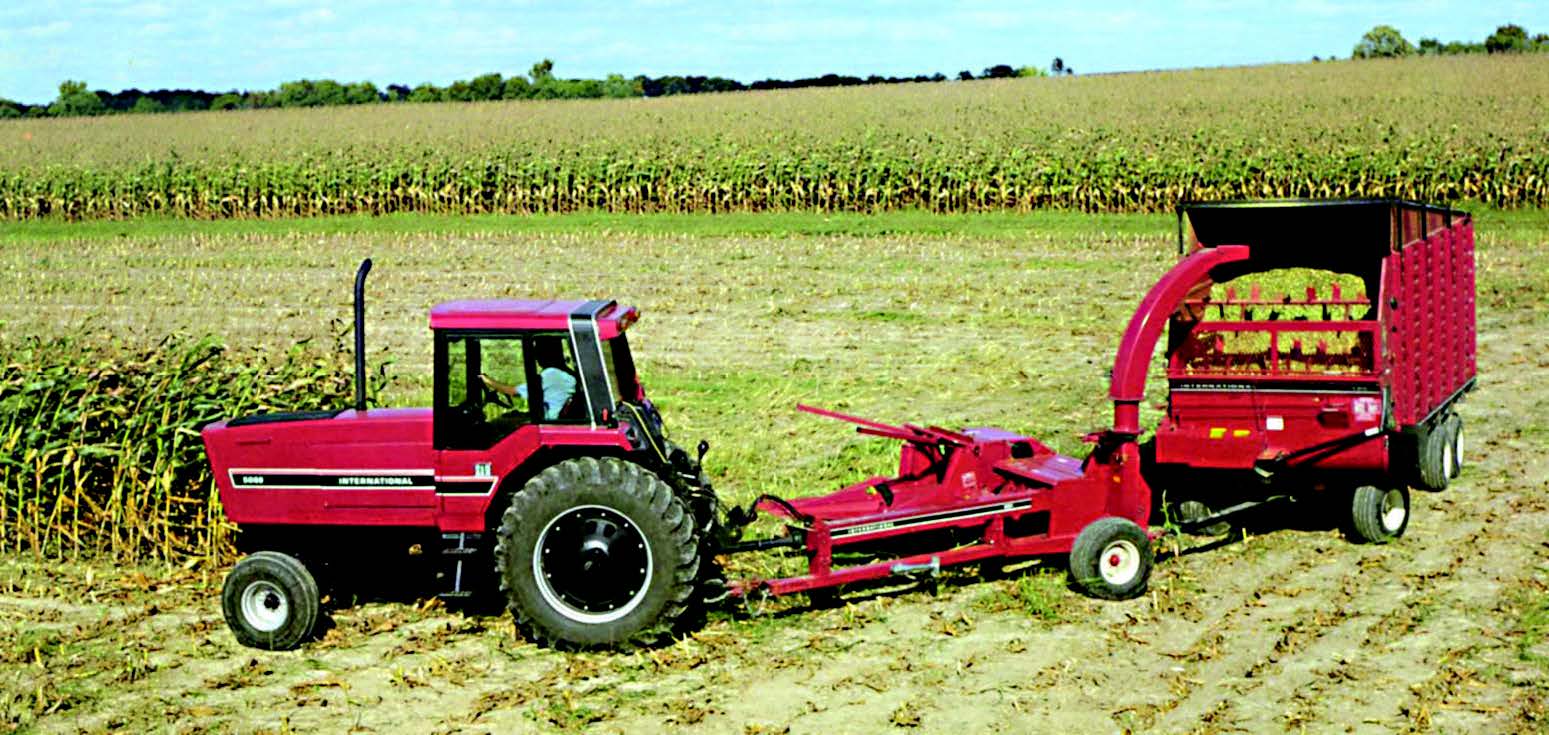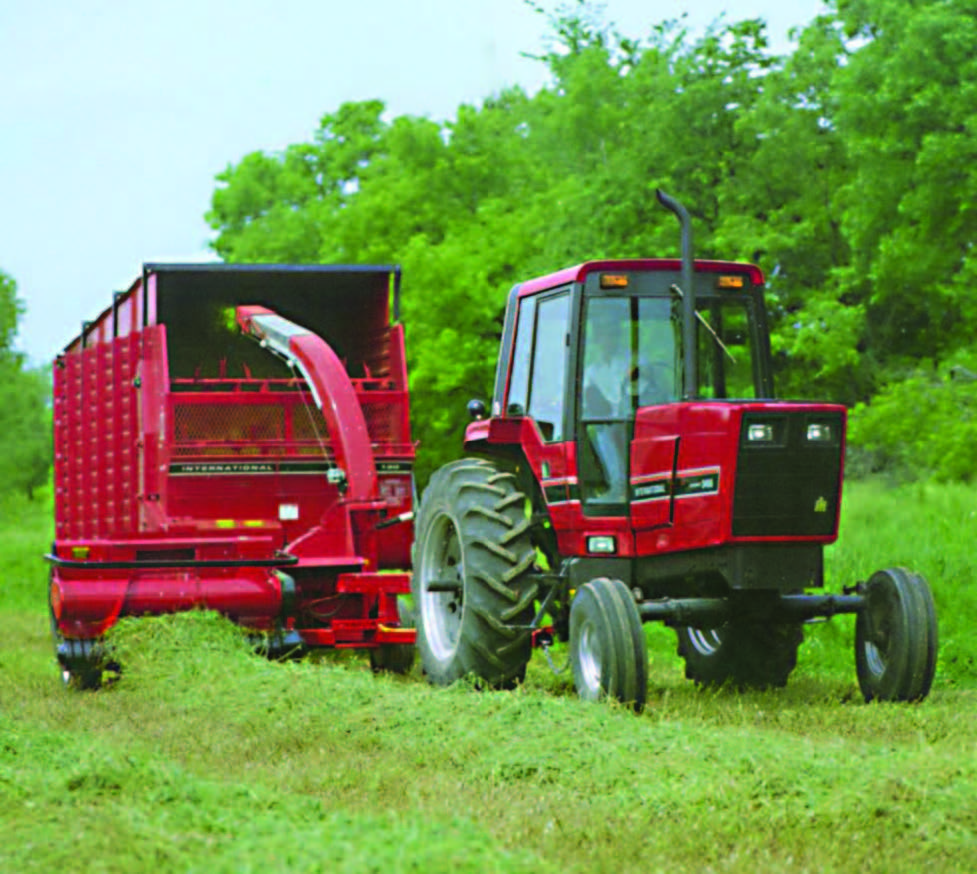In 1981, IH replaced its 720 and 830 forage harvesters with newer, updated models, the 781 and 881. These new forage harvesters were very similar to their older counterparts. Both the 781 and 881 had a long black stripe decal running the length of their tongue to identify them. In this story, the 781 and 881 may be referred to as the X81 chopper when a feature is not model specific.
Before you could chop forage, you had to feed it into the machine. On both the X81 choppers, IH fed the crop material into the chopper with four feed rolls. The first pair of rolls (top and bottom) was coarse toothed across their edges to aggressively grab and feed material. The second pair of rolls had a fine tooth roll on top and a smooth roll on the bottom. The pair of top feed rolls could “float” as dual springs on each side of the feeder house kept tension on them. This allowed the chopper to handle varying amounts of crop material and still help maintain a uniform length of cut. These feed rolls were driven by a 60 pound heavy link roller chain.
The length of cut was determined by the feed roll speed. Increasing or decreasing the speed of the feed rolls determined the length the forage material was cut. When you needed to change the feed roll speed, it was simple by just reversing one dual sprocket. The length of cut could be changed from 3/16ths inch to 5/16ths inch.
A smooth roll scraper bar was provided to keep the lower roll clean and not allow crop material to bunch and pile in front of the cutter head.
IH used dual electromagnetic clutches to start, stop or reverse the feed rolls. This was controlled by a toggle switch on the chopper control panel at the tractor. You could feed large volumes of crop material through the feed rolls by using this feature to prevent plugging of the chopper.
The 18 inch diameter high helix cutter head acted as a sharp pair of scissors, cutting material across the shear bar. The knives sliced the crop material instead of “chopping” it and this required less power.
An example of this was once again taken from my elementary school art class (I was told this art class stuff would pay off later in life and sure enough, they were right—it has!). A scissors cuts paper much easier than stabbing it with a knife. The helix cutter head on the IH X81 chopper acted like a scissors with the stationary shear bar having the forage material cut against it with a traveling contact point of cut.







